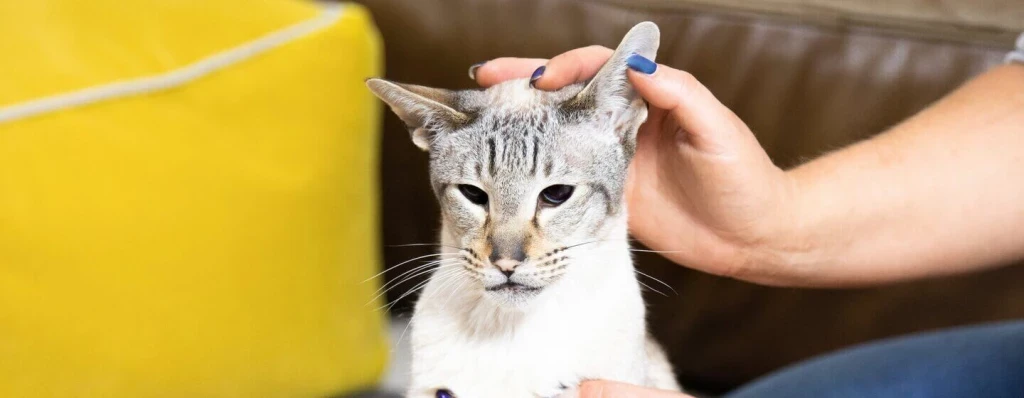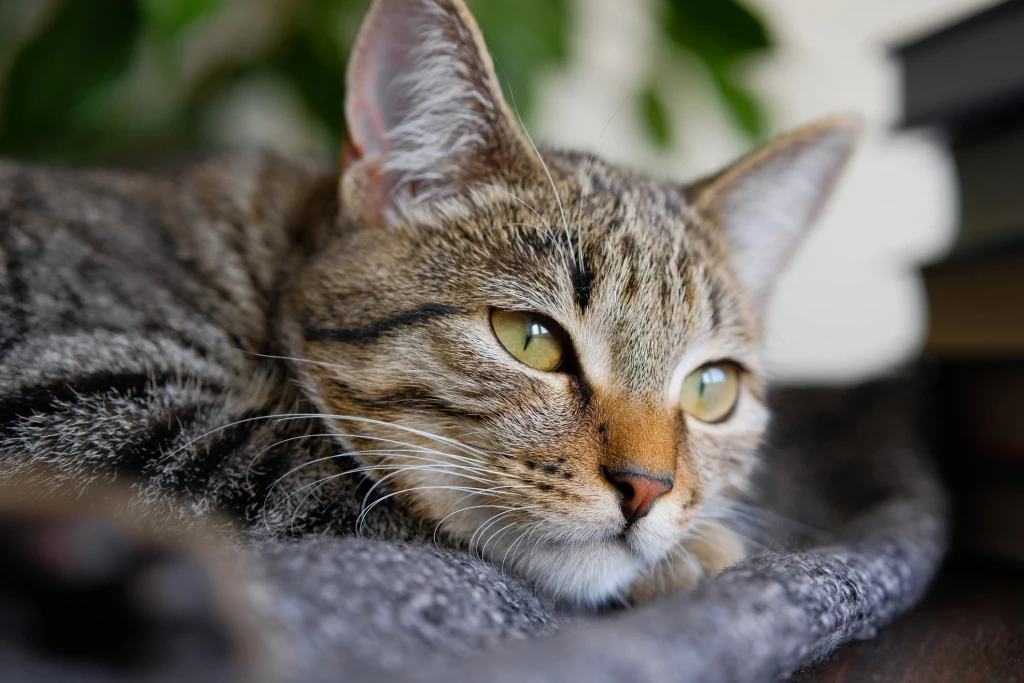Have you ever noticed that your cat’s ears feel cold to the touch? If so, you might have wondered what it means and whether you should be worried. Well, you’re not alone. Many cat owners have the same question and curiosity about their feline friends’ ears.
In this blog post, I will explore some of the possible reasons why your cat’s ears are cold and what you can do to keep them warm and healthy. I will also share some fun facts and stories about cats and their ears that you might find interesting and amusing. So, if you’re ready to learn more about this topic, read on and enjoy!
What Is The Normal Temperature Of A Cat’s Ears And Body?
You might think that your cat’s ears are cold because they are different from your own. After all, humans have a normal body temperature of 98.6°F (37°C), while cats have a higher baseline temperature of 100.5 to 102.5°F (38.3 to 39.2°C). This means that cats are naturally warmer than humans and can tolerate higher temperatures better.
But what about their ears? Well, a cat’s ears are not only important for hearing, but also for regulating their body temperature. A cat’s ears have a lot of blood vessels that help dissipate excess heat or conserve it when needed. This means that a cat’s ear temperature can fluctuate depending on the surrounding temperature and other factors.
A normal ear temperature for a cat is between 100 and 103°F (37.8 and 39.4°C). However, this can vary slightly depending on the individual cat, the type of thermometer used, and the accuracy of the reading. As with a rectal temperature reading, you should consult your veterinarian immediately if your cat’s ear temperature is below 99°F or above 104°F. These could indicate serious health problems, such as hypothermia or hyperthermia, which we will discuss later.
So, how can you check your cat’s ear temperature? You will need a digital ear thermometer that is designed for pets. You do not need lubrication for this method. You will also need someone to help you hold your cat still and calm while you insert the thermometer into their ear canal at a 90-degree angle. Be careful not to damage your cat’s eardrum or cause them any pain or discomfort. Wait until the thermometer beeps and then gently remove it and check the reading.
Remember that ear temperatures are not always accurate and may not reflect your cat’s core body temperature. Therefore, it is best to use a rectal thermometer if you want to get a more precise measurement of your cat’s body temperature. However, this can be more invasive and stressful for your cat, so you should only do it if necessary or advised by your veterinarian.
What Are Some Common Causes Of Cold Ears In Cats?
There are many reasons why your cat’s ears might feel cold to the touch. Some of them are harmless and temporary, while others are serious and require immediate veterinary attention. Here are some of the most common causes of cold ears in cats and how to recognize them:
- Thermoregulation: When your cat is cold, blood flow to the ears is reduced to conserve heat for the vital internal organs. This can happen when your cat is exposed to a cold environment, such as snow or rain. If this is the case, you shouldn’t be worried. With a warm blanket and a gentle ear massage, you can soon get your kitty back to normal temperature.
- Blood flow restriction: When your cat is sleeping or relaxing, its metabolism slows down and its heat production decreases. This can result in reduced blood flow to the extremities, such as the ears. This is normal and does not harm your cat’s health. However, if your cat’s ears are cold for a long time or if they show other signs of illness, you should consult your veterinarian.
- Hypothermia: When your cat loses heat faster than it can produce it, its core body temperature drops below 95°F (35°C). This can cause hypothermia, which is a potentially life-threatening condition. Some of the symptoms of hypothermia include cold ears, legs, and paws, shivering, lethargy, slow breathing and heart rate, pale gums, weakness, and coma. Hypothermia can be caused by primary factors, such as exposure to cold environments, or secondary factors, such as illness, injury, or drugs that affect the body’s ability to thermoregulate. If you suspect your cat has hypothermia, wrap it in warm blankets and take it to the vet as soon as possible.
- Frostbite: When your cat’s ears are exposed to extremely cold temperatures for a prolonged period of time, they can develop frostbite. Frostbite is a condition where the tissues freeze and die due to lack of blood flow and oxygen. Frostbite can cause your cat’s ears to become cold, stiff, swollen, discolored, or even fall off. Frostbite can also affect other parts of your cat’s body, such as the tail, paws, nose, and lips. If you notice any signs of frostbite in your cat, take it to the vet immediately for treatment.
- Anxiety: When your cat is stressed or anxious about a new environment or situation, it can experience cold ears. This is because anxiety can trigger the fight-or-flight response, which causes blood flow to be diverted from the peripheral areas to the core areas of the body. This is a natural and temporary reaction that does not endanger your cat’s health. However, if your cat’s anxiety persists or interferes with its normal behavior, you should seek professional help to address the underlying cause.
How Can You Prevent Or Treat Cold Ears In Cats?
If you want to keep your cat’s ears warm and healthy, there are some things you can do to prevent or treat cold ears in cats. Here are some tips and recommendations:
- Provide adequate shelter and insulation for your cat if it lives outdoors or likes to go outside in cold weather. Make sure your cat has access to a dry and cozy place where it can escape from the wind, rain, snow, or frost. You can also provide your cat with a heated bed, a flannel blanket, or a warm bottle of water to snuggle with.
- Monitor your cat’s body temperature regularly and seek veterinary attention if you suspect hypothermia or frostbite. Use a rectal thermometer to check your cat’s core temperature and compare it with the normal range of 100.5 to 102.5°F (38.3 to 39.2°C). If your cat has hypothermia or frostbite, wrap it in warm blankets and take it to the vet as soon as possible. Do not massage cold cat ears or use forced heat, such as hair dryers, on frostbitten ears. Do not apply heat directly to the cat’s skin or fur, such as hot water bottles or heating pads.
- Reduce your cat’s stress and anxiety levels by providing a safe and comfortable environment for it. Make sure your cat has access to food, water, litter box, toys, scratching posts, hiding places, and familiar scents. Avoid sudden changes in routine or surroundings that might upset your cat. Provide positive reinforcement and socialization for your cat to help it cope with new situations. You can also use calming products, such as pheromones or supplements, to help your cat relax.
- Keep your cat’s ears clean and healthy by checking them regularly for signs of infection, parasites, or injury. Use a gentle ear cleaner and cotton balls to wipe away any dirt or debris from your cat’s ears. Do not use cotton swabs or insert anything into your cat’s ear canal. If you notice any redness, swelling, discharge, odor, or pain in your cat’s ears, take it to the vet for diagnosis and treatment.
Conclusion
your cat’s ears can tell you a lot about their health and well-being. While cold ears are not always a sign of trouble, they can sometimes indicate serious conditions such as hypothermia or frostbite. Therefore, it is important to monitor your cat’s ear temperature and look for other symptoms that might indicate a problem. You can also prevent or treat cold ears in cats by providing them with a warm and comfortable environment, checking their body temperature regularly, and seeking veterinary attention if needed. I hope you found this blog post informative and useful.






